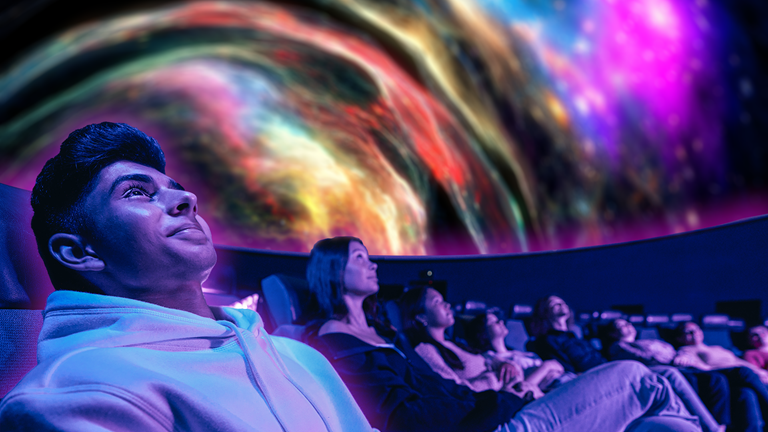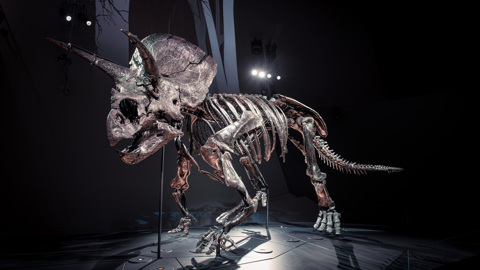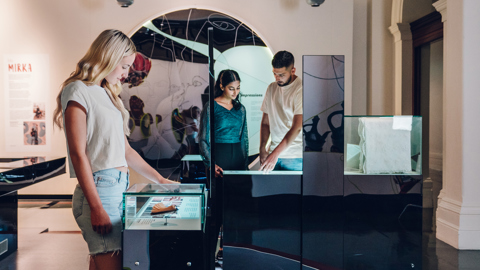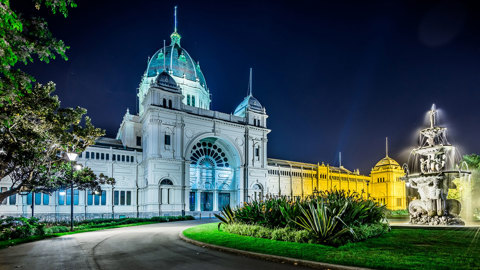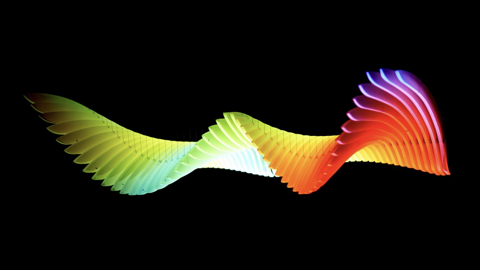Skynotes: April 2025
Upcoming events
Lucy to visit its third space rock
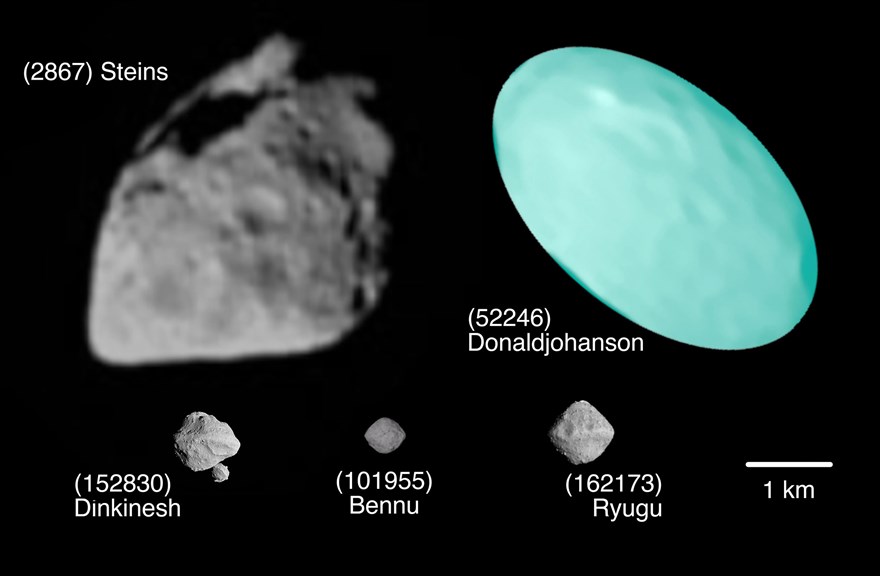
Having already flown-by two other asteroids, NASA’s Lucy probe is set to pass by another this month, Asteroid 52246 or Donaldjohanson which is almost 5 km in size and likely ovoid or elongated. It seems to have arisen from the break up a larger body perhaps 150 million years ago in the inner main belt that resulted in the post-collision Erigone group all with similar orbits.
Lucy’s mission is to investigate up to a dozen asteroids over a dozen years, including some of the Trojans that orbit in groups that lead and trail Jupiter. As Lucy’s Principal Investigator Hal Levison has said; “These relics are effectively fossils of the planet formation process, holding vital clues to deciphering the history of our solar system.”
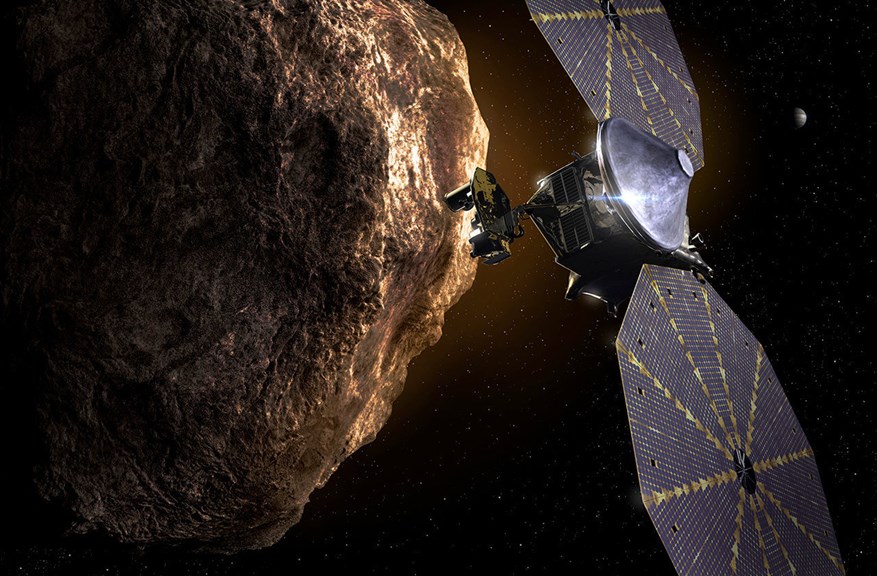
The Lucy mission, investigating ancient fossil asteroids, is named after the female hominid Australopithecus afarensis whose fossil remains were discovered in Ethiopia in 1974. And the mission’s upcoming target after the fossil’s co-discover paleoanthropologist Donald Johanson.
Lucy Orbit Animation

Explore Lucy Mission and Lucy Spacecraft
Melbourne Sun times1
| Date | Rise | Set | Day length | Solar noon2 |
|---|---|---|---|---|
| Tuesday 1st | 7:33am | 7:13pm | 11:39hours | 1:24pm |
| Friday 11th | 6:24am | 5:58pm | 11:15hours | 12:21pm |
| Monday 21st | 6:51am | 5:45pm | 10:53hours | 12:18pm |
| Wednesday 30th | 7:00am | 5:34pm | 10:34hours | 12:17pm |
1 Daylight Savings time ends 3am, Sunday 6 April, with clocks turned back 1 hour.
2 When the sun is at its highest, crossing the meridian or local longitude.
Moon phases
| Phase | Date |
|---|---|
| First Quarter | Saturday 5th |
| Full Moon | Sunday 13th |
| Third Quarter | Monday 21st |
| New Moon | Monday 28th |
Moon distances
Lunar perigee (closest to Earth) is on Monday 28th at 357,118 km.
Lunar apogee (furthest from Earth) is on Monday 28th at 406,295 km.
*When the sun is at its highest, crossing the meridian or local longitude.
Planets
Mercury is visible in the early dawn light in the east before fading by 6am. It will appear a little later each morning as the month progresses.
Venus has just passed in front of the Sun (inferior solar conjunction) but can be seen from 4am in the east after which it will fade from view by 6:30am.
Mars is an evening object from 6:30pm seen in the north at dusk. It will move across the northern sky before setting around 10:30pm in the north-west.
Jupiter is soon to move behind the Sun for its solar conjunction, but is still visible this month from 6pm in the north-west before setting by 8:40pm.
Saturn, just emerging from solar conjunction, is visible in the east around 4:20am before fading in the dawn light by 6am.
Meteors
April’s main shower, The Lyrids, is centred near the bright star Vega low in the north at 3am. It is active from 16th to 25th peaking on the 22nd to 23rd. Better placed is the Pi-Puppids associated with Comet Grigg-Skjellerup which peaks on 24th centred low in the south-west near Canopus in Carina.
Stars and constellations
In the South
The Southern Cross can be found on its side in the south-east with the Two Pointers below. To the right of the Cross, in the south-western sky, is the star Canopus, the second brightest star in the night sky. Low in the south is Achernar, the head of the river Eridanus. Achernar never sets in Melbourne and is called a circumpolar star as it moves through a half-circle around the South Celestial Pole during the night as Earth rotates on its axis.
In the North to South-West
If a dark location you can see the Large and Small Clouds of Magellan, two small neighbouring galaxies to our own Milky Way. They appear as irregular fuzzy patches isolated from the broad band of stars that runs across the sky which is our edge-on view of own galaxy.
In less light-polluted skies you can also see in the Milky Way several dark regions that are vast clouds of dust. Whilst we may see a few foreground stars, the dark areas behind obscure our view of more distant stars of the galaxy.
In the West
Orion, the hunter, is in the west lying almost on his side with the red-giant star Betelgeuse as one of his shoulders. The three bright stars that form an obvious line are Alnitak, Alnilam and Mintaka. They mark his belt and also conveniently the base of the local ‘Saucepan’ asterism. The handle of the saucepan is Orion’s scabbard which hangs from his belt. Continuing the belt stars above and a little to the right we reach Sirius, the brightest star in the night sky and principal star in Canis Major (greater or larger dog) which is one of Orion’s hunting dogs. Below Sirius in the north-west is Procyon which marks the position of his lesser or smaller dog Canis Minor.
Below Orion and drawing closer to the horizon during the month is the Hyades, an open group of stars that form a sideways wedge or V. This is the triangular head of Taurus, the bull, with his ‘angry eye’ as the red-giant star Aldebaran on the corner.
In the North
In the north but upside down from our southern hemisphere perspective is Leo, the lion. This constellation is easily recognised by the hook shape (or inverted backwards question mark) of stars that forms the mane on the lion’s head and shoulders.
To the left of Leo and close together are the two bright stars Castor and Pollux, the principal stars in the constellation of Gemini, the twins which appears upside down as well from southern latitudes.
In the east
Later this month and into May the spectacular constellation of Scorpius will begin its return to our evening skies. This is one of the largest constellations and when it appears low in the east you can easily identify to the left its long curving tail leading to its body containing the red-giant star Antares marking its heart, and to the right its pincers reaching out.
International Space Station
ISS orbits every 90 minutes at an average distance of 400 km appearing like a bright star moving slowly across the night sky. Here are some of the brightest passes expected this month over Melbourne and Central Victoria:
Morning
Friday 4th 6:55am to 7:02am, South-West to North-East.
Monday 7th 5:08am to 5:11am, North-North-West to North-East.
Evening
Saturday 12th 7:13pm to 7:17pm, North-North-West to East
Tuesday 15th 6:20pm to 6:27pm, North-West to South-East
Heavens Above gives predictions for visible passes of space stations and major satellites, live sky views and 3D visualisations. Be sure first to enter your location under ‘Configuration’.
On this day
1st 1948, Alpha, Bethe and Gamow publish their famous paper on the ‘hot Big Bang’.
2nd 1845, Fizeau and Foucault take the first photograph of the Sun.
3rd 1966, Luna 10 (USSR) became the first spacecraft to orbit the Moon.
6th 1973, Pioneer 11 (USA) probe launched to Jupiter and Saturn.
8th 1732, birth of David Rittenhouse who determined Earth-Sun distance of 150 million km.
9th 1959, NASA’s first cohort of astronauts, “the Mercury 7”, are announced.
11th 1905, Einstein’s ‘Special Theory of Relativity’ is published.
11th 1970, Apollo13 (USA) was launched on its ill-fated mission.
12th 1633, Galileo’s trial by the Catholic Inquisition, on the question of a sun-centred solar system, begins in Rome.
12th 1961, Yuri Gagarin (USSR) became the first human in space orbiting Earth for 108 minutes in Vostok 1.
12th 1981, Columbia (USA) was the first space shuttle to be launched.
14th 1629, birth of Christiaan Huygens who explained Saturn’s rings and discovered its largest moon Titan.
16th 1495, birth of Petrus Apianus who established that cometary tails at all times point away from the Sun.
18th 1971, Salyut 1 (USSR), the first space station, was launched.
19th 1975, first Indian satellite, Aryabhata, is launched.
21st 1990, the Hubble Space Telescope (HST) was launched on the space shuttle Discovery.
23rd 1992, COBE satellite reveals microwave temperature variation across universe.
27th 2002, final telemetry received from probe Pioneer 10 (USA).
28th 1900, birth of Dutch astronomer Jan Oort whose name is given to a vast cloud of icy objects thought to orbit the sun well beyond the Kuiper Belt.
28th 2001, American Dennis Tito became first space tourist paying the Russian Space Agency $US20 million to travel on a Soyuz craft to the ISS for an 8-day journey.
30th 1006, brightest supernova ever recorded is seen in the constellation of Lupus.
